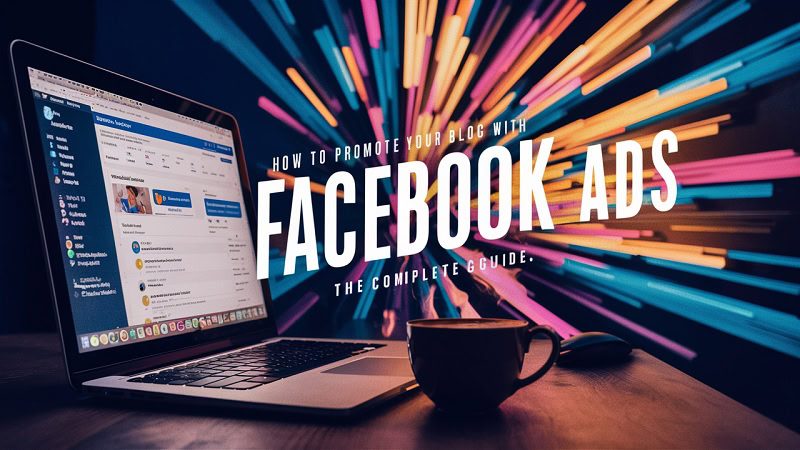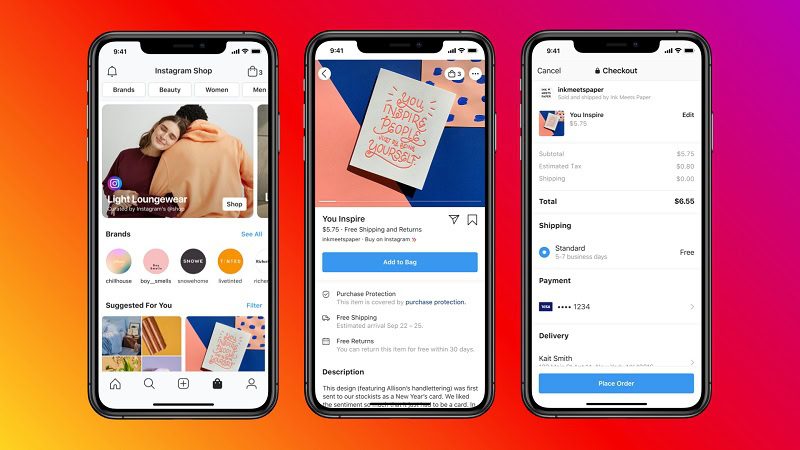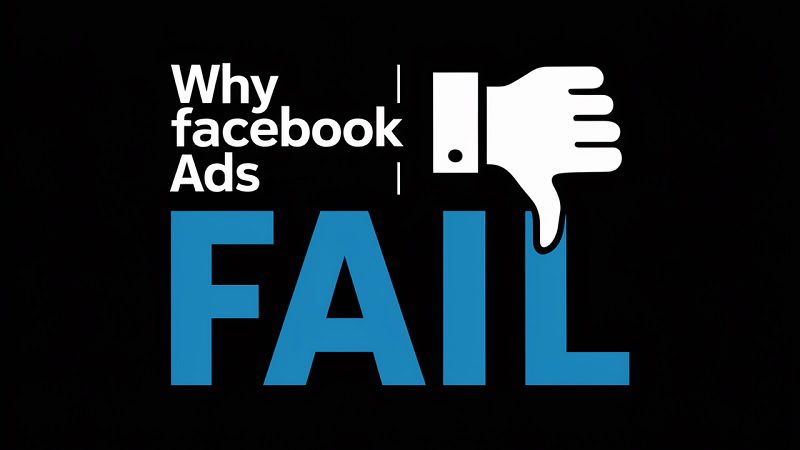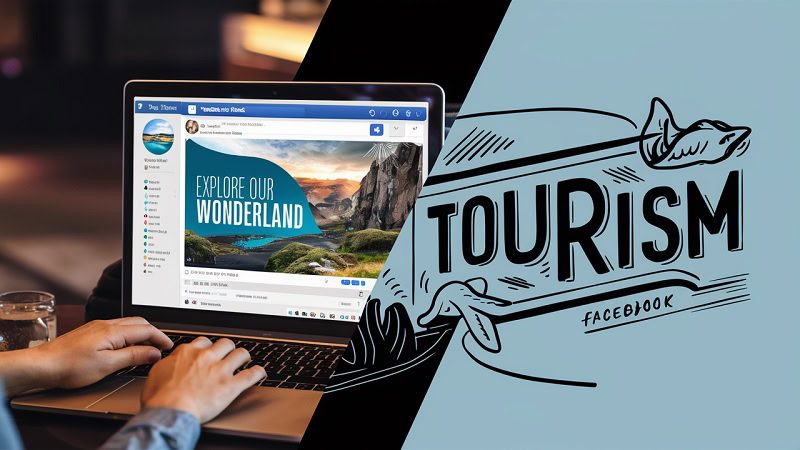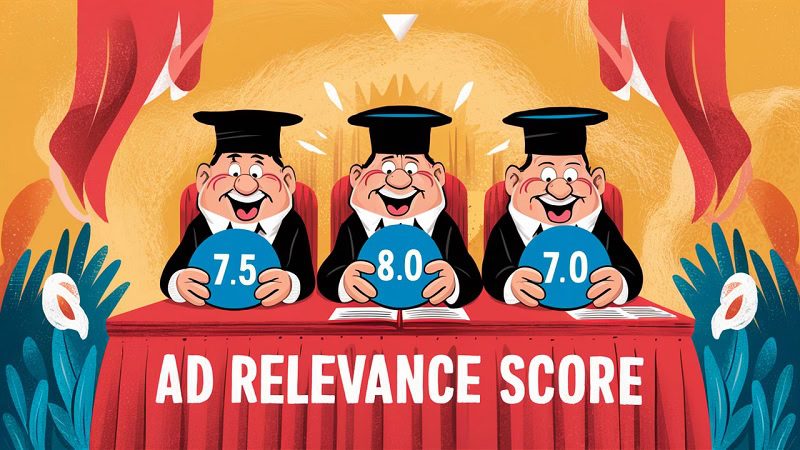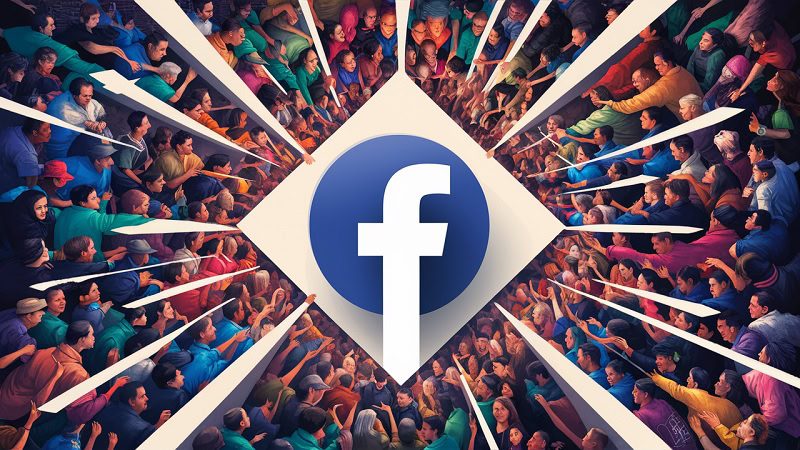Social media marketing can be an incredibly powerful tool for brands looking to supercharge their business growth, attract high-value customers, and increase sales.
But the world of social media marketing is also complex.
There’s a huge range of social platforms to choose from, each with their own marketing tools, audience targeting tactics, and best practices. And if you’re going to achieve optimal results with social media marketing, you need to understand how to navigate this space.
(That’s where we come in.)

Boost E-Commerce ROI: Download Our Free CPA & ROAS Calculator
We’ve pulled together the ultimate guide to social media marketing, covering everything you need to know about social platforms, campaign types, analytics, and expert strategies.
What is social media marketing?
Social media marketing involves using social media platforms (e.g. Facebook, TikTok, Instagram) to tackle key business and marketing objectives.
Brands regularly use social media marketing tactics to achieve a number of different goals, including:
- Increasing brand awareness (i.e. followers, reach, shares)
- Driving user engagement (i.e. comments, views, likes)
- Generating conversions (i.e. clicks, subscriptions, sales)
- Retaining existing customers (i.e. reviews, repeat sales)
Different social media platforms, ad formats, and marketing strategies can be leveraged to deliver against these specific objectives.
There are also two distinct types of social media marketing – organic marketing and paid marketing.
Organic social media marketing is essentially ‘free’ marketing activities. This usually involves marketers uploading compelling content and communicating directly with customers to strengthen their brand profile.
(However, there are often still costs associated with creative production or agency management, so organic marketing may not be 100% free.)
Paid social media marketing is marketing activity that costs money to run – in this case, launching paid social media ads. These paid ads can be actively promoted to specific audiences in a range of different formats, often delivering outstanding returns for brands.
The different social media platforms
Choosing the right social media platforms is key to building a successful social media strategy.
Your choice of social media platform will have a direct impact on the audiences, ad formats, and marketing tools available to you.
Let’s run through the most popular social media platforms available to advertisers, and explain how each network can contribute to your business and social media marketing goals.
Facebook is one of the largest and most popular social media networks in the world.
The platform attracts around 2.9bn monthly active users, which provides social media marketers with an opportunity to reach, target, and convert a colossal audience.
Facebook also offers a fairly balanced reach across demographic segments, meaning many different advertisers can utilise the platform to achieve their marketing goals.
While the 18-34 group is the largest on Facebook (containing around 54% of the total audience) brands can still reach older prospects effectively, as 23% of the audience is over the age of 45.
(Source: statista.com)
Paid advertising on Facebook can be hugely effective for marketers, as they can access a range of data-driven and efficient targeting tactics, including:
- Demographic Audiences – targeting age, gender, education, job title
- Interest Audiences – targeting specific hobbies and interests
- Behavioural Audiences – targeting previous purchases and device usage data
- Custom Audiences – data-fuelled segments created using Facebook pixel data
- Lookalike Audiences – based on replicating Custom Audiences
Facebook offers several smart ad formats, meaning you can target these audience segments in creative and impactful ways. Brands can also achieve excellent results through organic marketing efforts, reaching a huge audience of prospects and existing customers.
Instagram is a member of the wider Facebook social media family, which is a big bonus for advertisers. Facebook and Instagram share a lot of audience data and targeting options, which can help you to refine your targeting tactics and boost your total marketing reach.
However, Instagram also offers several unique features that separate it from Facebook and make it a strong contender for your social media marketing plans.
Similarly to Facebook, Instagram boasts an enormous reach, attracting around 2bn monthly active users and making it one of the largest networks on the planet.
(Source: statista.com)
The Instagram feed revolves around high-quality visuals and engaging content, so whether you’re looking to launch organic or paid activity, you need to make sure that you stand out from the competition.
You can also easily extend your paid marketing campaigns across both Facebook and Instagram, which can help you rapidly increase reach and discover new audiences.
TikTok
TikTok may be a relatively new player in the social media sphere, but the platform is already making huge waves.
Since launching in 2016, the TikTok app has continued to thrive, growing at a mind-blowing speed and attracting hordes of new users.
Around 1bn users currently log in to the TikTok platform every month, providing marketers with a golden opportunity to expand their reach and connect with new audiences. TikTok is also particularly popular with Gen Z users, which is extremely beneficial for brands hoping to communicate with younger audiences.
Paid advertisers can utilise many different creative ad formats on TikTok, including:
- In-Feed Video Ads
- TopView Ads
- Spark Ads
- Brand Takeovers
- Branded Hashtag Challenges
- Branded Effects
In terms of targeting options, TikTok offers more standard audiences (e.g. Demographic, Interest) alongside data-driven custom audiences and pixel segments.
Organic marketing can also deliver insane results on the TikTok platform, as the right types of content can generate massive reach and rapidly achieve viral fame.
Pinterest is a unique social media app that has successfully differentiated itself from many other platforms.
Rather than functioning like a traditional social media network, Pinterest is more like a visual search engine, packed full of eye-catching visuals and quality content.
Around 433m monthly users are active on Pinterest, and while the platform struggles to compete with the likes of Facebook when it comes to sheer scale, brands can still reach a receptive and profitable audience.
(Source: statista.com)
Pinterest content is delivered in the form of ‘Pins’ that are essentially digital bookmarks.
Users can click on these Pins to expand them, share them with friends, and save them to ‘Boards’ to organise them and keep them for future reference.
Paid advertising on Pinterest works in the same way. Ads appear as ‘Promoted Pins’ that can be targeted towards specific audiences and delivered in various formats.
Pinterest offers a selection of paid social ad formats, including:
- Promoted Pins
- Promoted Carousels
- Promoted Video Pins
- Promoted App Pins
- Collections Pins
- Idea Pins
- Buyable Pins
Plus, since Pinterest functions like a search engine, marketers can take full advantage of SEO tactics to enhance organic activity. By using strategic keywords, uploading engaging Pins, and creating interesting Boards, brands can increase the visibility of their content to boost engagement.
YouTube
YouTube is the reigning champion of online video, providing marketers with a huge number of opportunities for effective paid and organic marketing.
YouTube attracts around 1.7bn unique users every month, which is a mind-blowing statistic.
This enormous scale is a major bonus for digital marketers, and paid social media marketing on the platform has the potential to deliver exceptional returns. There is a near-infinite amount of YouTube content available for targeting, and almost 2bn users consuming it.
Since YouTube is part of the Google network, it also offers marketers access to mountains of data that can be used to build ultra-efficient audiences.
Advertisers can target Demographic audiences, Interest audiences, and build more advanced segments using first-party data sources. They can even leverage Google search data to refine their targeting tactics, which often skyrockets efficiency.
You can run several paid advertising formats on YouTube, such as:
- Skippable and Non-Skippable In-Stream Video Ads
- Discovery Ads
- Bumper Ads
- Overlay Ads
- Companion Banners
- Display Ads
Twitter places a huge emphasis on active conversations and direct interactions between users and businesses, which opens up exciting opportunities for strategic marketing.
Approximately 238m users log in to Twitter every day, and there are many different ways to reach, target, and engage these audiences to generate results.
In terms of paid advertising, you can target the following audiences through Twitter ads:
- Demographic Audiences – based on language, gender, age, location, etc
- Audience Types – targeting conversation topics, specific keywords, events, etc
- Your Audiences – includes follower targeting and first-party Custom Audiences
Marketers can launch a wide range of Twitter ad formats, from pre-roll video placements to text-based Promoted Tweets and image Carousels.
(Source: statista.com)
Twitter also presents a big opportunity for effective organic marketing.
If you can master the art of organic Twitter marketing (i.e. Tweet replies, relevant hashtags, engaging posts) then you can quickly build up an active and loyal audience of followers.
Snapchat
The Snapchat social network is all about short-form content, punchy creative assets, and attention-grabbing visuals.
The Snapchat app attracts around 557m monthly active users and is especially popular among young Millennial and Gen Z audiences.
Marketers can utilise several different types of Snapchat ad formats, including:
- Snap Ads – 10-second video or image ads
- Story Ads – ads containing 3-20 individual image/video assets
- Sponsored Lenses – sponsored camera filters and AR lenses
- On-Demand Geofilters – sponsored camera filters for geofenced locations
The key to success on Snapchat is producing creative assets that feel authentic, native, and captivating. This applies to both organic and paid marketing executions!
Audiences are often scrolling through the Snapchat feed at dizzying speeds, so you need to make sure that your brand is highly visible and engaging for users.
Look at trending posts and popular publishers for inspiration, and tailor both your paid ads and organic posts to your audience’s interests.
If you’re looking to connect with a professional audience or target your ads towards specific industries, LinkedIn is the place to be.
Around 310m users access the LinkedIn app every month, and the platform is designed to allow professionals to share business updates, network with colleagues, and engage with industry news.
LinkedIn marketing is often utilised by B2B brands who are looking to engage new customers and build their profile in a certain sector. Since LinkedIn allows marketers to target business decision-makers in specific verticals, it can be extremely effective for lead generation campaigns.
Paid social advertisers on LinkedIn can target the following audiences:
- Demographic – based on gender, location, age, etc
- Company – based on company size, industry, name, and followers
- Education – based on fields of study and qualifications
- Job Experience – based on specific roles, seniority, and years of experience
LinkedIn offers a range of versatile ad formats, including Sponsored Content native ads, Sponsored InMail placements, and simple Text Ads.
With the right organic content strategy, you can also build a strong reputation on LinkedIn and rapidly expand your network. If you’re mixing up your posts (e.g. infographics, videos, text) and offering genuine value to your audience, your content can quickly gain momentum.
Why does social media marketing work?
Social media marketing has delivered outstanding results for businesses around the globe, from ambitious start-ups to established global corporations.
But why is social media so effective?
Well, social media sites offer a lot of different ingredients that combine to create a winning recipe for marketers.
For one thing, the scale of these platforms is invaluable for digital advertisers. The ability to reach millions of potential customers allows businesses to grow brand awareness, generate high volumes of conversions, and improve the efficiency of their ad spend.
Social marketing platforms are also constantly competing to outdo one another, which ultimately benefits advertisers. New advertising solutions, data sources, and marketing tools are constantly being released to the market – and all of these innovations can drive results.
Finally, social media is built around communication and interaction.
Brands now have the ability to instantly connect with colossal global audiences, which enhances everything from customer service to sales promotions.
Social media statistics that will blow your mind
We’ve written a lot about the effectiveness and efficiency of social media marketing.
But it’s time to get down to the nitty-gritty.
Rather than just explaining how social media marketing can transform your brand, we’re going to show you – in the form of jaw-dropping statistics and industry figures.
1. As of January 2022, there were 3.96bn social media users active across all platforms.
2. Facebook paid ads are used by 70% of marketers.
3. 90% of Instagram users follow a business or brand account.
4. TikTok users consume around 24 hours of content on the app every single month.
5. 97% of the top searches on Pinterest are unbranded.
6. YouTube is the second largest search engine in the world.
7. 52% of Twitter users log in to the platform on a daily basis.
8. The average Snapchat user spends 30 minutes on the app every day.
9. 4 out of 5 LinkedIn members claim to ‘drive business decisions’.
The advantages and disadvantages) of social media marketing
Social media marketing can drive superb results for your brand – but that doesn’t mean there aren’t a few potential pitfalls to watch out for.
Let’s review some of the key advantages (and disadvantages) associated with social media advertising.
What are the advantages of social media marketing?
Popular social media platforms offer you access to millions of potential customers and high-value prospects – and the value of this reach shouldn’t be underestimated.
With the right targeting tactics and creative messaging, you can use the scale of social networks to supercharge your business growth and conversion rate.
Social media marketing is also highly versatile, meaning it can help you to tackle a range of different business objectives. For example, while organic marketing allows you to engage existing customers and nurture brand loyalty, paid marketing enables you to attract new customers and expand your reach.
Finally, social media platforms are constantly harvesting data about audiences, advertisers, and campaigns – and this data is readily available for you to leverage.
You can use these insights to fuel your marketing efforts and improve your results, whether you’re looking to grow brand awareness and deliver cost-efficient conversions.
All of these advantages make social media marketing a potent tool for brands, with the potential to deliver a tremendous ROI.
Are there any drawbacks to social media marketing?
Social media marketing offers plenty of amazing benefits – but no advertising channel is perfect.
For one thing, paid advertising on social media costs money. You’ll need to invest a healthy budget to see significant returns, and this applies to every platform.
(However, it’s worth noting that with data-driven audience targeting and a smart marketing strategy, the results achieved from paid advertising far outweigh the costs.)
Running effective social media marketing is also time consuming. You’ll need to regularly dedicate time to setting up paid campaigns, creating content, monitoring reports, and making optimisations.
If you’re struggling to make time for social media marketing, partnering with a specialist agency can be a lifesaver. A social media management expert can handle all of the heavy lifting, optimising both organic and paid campaigns to maximise your returns.
The different types of social media campaigns
The world of social media marketing is vast, and there are many different types of campaigns that you can run to achieve different objectives.
Improving brand awareness
If you’re a business looking to build your reputation or launch a new product, you can utilise social channels to effectively increase brand awareness.
Social media marketing enables you to reach a mind-blowing number of potential customers, meaning you can quickly establish your brand identity across multiple platforms.
Driving engagement and familiarity
Once your target audience is aware that your brand exists, you can start to increase familiarity and affinity by driving engagement.
Generating video views and clicks on your content is a good way to highlight your brand values and product offering. This is where high-quality organic and paid content is key!
Boosting website traffic
Keen to send more potential customers to your website to check out your products and services?
Product-led ads and strong CTAs are a good way to increase clicks and drive traffic.
(This is also a great opportunity to use paid ads to target social media users who have previously engaged with your brand.)
Increasing conversions and sales
There are many different ways to drive conversions through social media marketing – but a tried & tested method is retargeting (or remarketing) campaigns.
The majority of social media platforms will allow you to set up a pixel on your website. This pixel can be used to identify, segment, and retarget website visitors who are more likely to convert.
What are the elements of successful social media marketing?
Unfortunately, there’s no magical solution or silver bullet that guarantees successful social media marketing.
(And if there was, we’d share it with you. Promise.)
However, there are a few common elements that you should focus on to maximise your chances of launching an effective marketing campaign.
If you can put these building blocks in place before you launch any organic or paid activity, you’ll be in a strong position to crush your social media goals.
In-depth audience knowledge
If you’re going to connect with (and ultimately convert) your target audience, you need to understand who they are and how you can reach them.
Who is your target audience? Which platforms or websites do they frequent? How do you want them to react to your messages?
A strong brand identity
The world of digital marketing is intensely competitive, so you need to build a compelling brand identity that can stand out. Maintain a consistent tone of voice across communications, establish a clear visual presence, and don’t shy away from personality.
Engaging and interesting content
Setting up a data-led and creative content calendar is a great way to enhance your organic marketing efforts. Always think about your audience when producing social media content, and don’t be afraid to mix in spontaneous social media posts alongside your scheduled activity.
Clear and actionable analytics
No matter if you’re launching paid social ads or organic posts, it’s vital that you understand how your social strategy is performing.
Get comfortable with the analytics dashboards and reporting systems on whatever platform you’re using, and focus on the metrics that align with your business objective. The more you know about your marketing performance, the easier it will be to optimise.
Building a social media marketing strategy
The word ‘strategy’ frequently appears when we’re talking about social media marketing.
But what does a social media marketing strategy actually look like? And how can you construct a strategy that will help you to smash your core objectives?
Although building an effective strategy can feel complicated at times, there are three main components that you should focus on to ensure success.
Firstly, think carefully about your choice of platform.
There are plenty of social media channels out there, but that doesn’t mean you need to use them all at once. Identify the best platforms for reaching your target audience, and get to grips with them before expanding your campaigns.
You’ll also need to establish clear and relevant objectives.
If you’re new to social media marketing, start small. You might want to post a certain amount of organic content every month, or test out a new paid advertising format.
Once you’ve gained experience on a platform, you can begin to define more specific objectives, such as achieving a target CTR or beating a CPA benchmark.
Finally, make the most of your social media analytics.
Always keep your marketing objectives in mind, and concentrate on the data points that relate to this objective. For example, if you’re looking to drive conversions through paid social ads, focusing on clicks and conversions will be more useful than post likes and shares.
Expert pointers for social media success
Let’s take a look at some proven tips for social media marketing that will help you to build your brand identity, maximise the potential of your platforms, and skyrocket your ROI.
Balance organic and paid marketing
A healthy balance of organic and paid marketing activity is the best way to unlock the full potential of social media advertising.
Consistently post high-quality organic content to engage your existing customers, and utilise paid ads to broaden your reach and generate leads. If you can balance both of these strategies, you’ll be able to nurture brand loyalty while also increasing your sales.
Create native, authentic content
Whether you’re producing organic assets or creating paid ads, think carefully about the platform they’ll be appearing on.
Content that feels native and tailored will always drive more engagement among your target audience, so don’t be tempted to re-use generic assets that don’t fit the brief!
For example, while long-form text posts and video assets may perform well on LinkedIn, they’ll stick out like a sore thumb on platforms like TikTok.
Look at trending posts or conduct a competitive analysis to understand the formula for success, and apply these learnings to your own creatives.
Diversify your messaging
Diversifying your social media messages is crucial to avoid fatiguing your audience and losing followers.
For example, not every post needs to be an aggressive sales pitch. Mix things up with different formats and keep your content fresh (e.g. using influencer marketing, blog posts, User Generated Content) to maintain interest.
Tracking your marketing activity
The process for tracking your marketing performance will differ slightly across platforms, but every major network offers a reporting dashboard that advertisers can access.
It’s important to familiarise yourself with these reporting systems quickly so that you can monitor delivery and make the necessary optimisations.
You should also look to implement a social media pixel on your website as quickly as possible when marketing on a new platform. This will enable you to accurately calculate the ROI of different platforms and set up effective retargeting segments.
Below are a few common ad metrics that are useful to track, but always remember to focus on the data points that will move you closer to achieving your business objectives:
- Reach
- Impressions
- Video Views
- Clicks
- CPC
- CTR
- Conversions
- CPA
- Conversion Rate
Useful social media marketing tools
Social media marketing tools can support brands in many different ways, from increasing efficiency to improving social listening and engagement.
There are a huge number of marketing tools available for advertisers, so it’s important to concentrate on the platforms and services that will offer the most value.
Here are three tools that can assist your social media marketing efforts:
Social content scheduling – Social Champ
Social Champ is a scheduling tool that allows you to plan, launch, and optimise your posts across multiple social media platforms.
Social content creation – Loomly
Loomly is a social media management platform with several content creation tools that enable you to identify trending topics, review best practices, and produce optimised assets.
Social media intelligence – BrandWatch
BrandWatch is a one-stop shop for social marketing intelligence, providing you with everything from in-depth market research to social listening and cross-platform analytics.
Handy resources for social media marketing
Social media marketing can be transformative for your brand growth – but don’t feel overwhelmed by all of the different platforms, ad formats, and tactics.
Start by creating a well-rounded strategy for a single platform that allows you to reach your target audience, and build from there.
Once you gain enough experience and confidence, you can begin to experiment with new audiences, formats, and social networks. And from there, there’s no stopping you!

